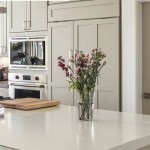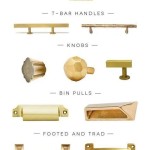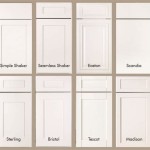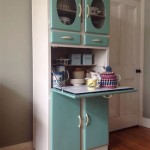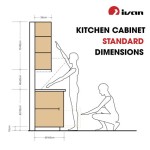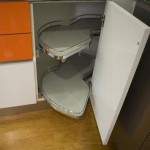How To Replace Hinges On Kitchen Cabinet Doors: A Comprehensive Guide
Replacing hinges on kitchen cabinet doors is a common maintenance task that can significantly improve the functionality and aesthetics of a kitchen. Over time, hinges can become worn, loose, or damaged, leading to sagging doors, difficulty in opening and closing, and an overall unkempt appearance. This article provides a step-by-step guide on how to effectively replace hinges on kitchen cabinet doors, ensuring a professional and lasting result.
Assessing The Existing Hinges And Selecting Replacements
Before initiating the replacement process, it is crucial to thoroughly assess the existing hinges. This involves identifying the type of hinge, its dimensions, and any specific features. Kitchen cabinet hinges come in various styles, each designed for different mounting configurations and cabinet designs. Common types include:
Overlay hinges: These are designed for doors that partially or fully cover the cabinet frame. The amount the door overlaps the frame is referred to as the overlay. There are different degrees of overlay (e.g., 1/2" overlay, full overlay), and it's essential to match the existing overlay when selecting replacements.
Inset hinges: These hinges are used when the door is flush with the cabinet frame. The door sits inside the frame opening rather than overlapping it.
Face-frame hinges: These are designed specifically for cabinets with a face frame, a structure that surrounds the cabinet opening.
Frameless hinges (also known as European hinges): These are used on cabinets without a face frame, where the door attaches directly to the cabinet box.
Concealed hinges: These hinges are hidden from view when the door is closed, providing a clean and modern aesthetic. These are almost always European-style hinges.
Once the hinge type is identified, measure its dimensions, including the overall length, width, and the distance between screw holes. Take detailed photographs of the existing hinge setup. This will be invaluable when comparing it to potential replacements and during the installation process.
When selecting replacement hinges, prioritize quality and durability. Opt for hinges made from sturdy materials such as steel or brass. Consider the finish of the hinges to ensure they complement the existing cabinet hardware and overall kitchen design. It's often advisable to purchase one extra hinge to have on hand in case of errors or future needs. Finally, check the load-bearing capacity of the prospective hinges, particularly if the cabinet doors are heavy or frequently used.
Gathering The Necessary Tools And Materials
Having the right tools and materials readily available is essential for a smooth and efficient hinge replacement process. The following items are typically required:
Screwdriver set: A screwdriver set with various sizes and types of heads (Phillips head and flathead) is indispensable. An electric screwdriver or drill with screwdriver bits can speed up the process, but it is essential to use it with caution to avoid stripping the screw heads.
Drill: A drill is necessary for creating pilot holes, especially if the existing screw holes are stripped or if installing new hinges with different screw hole locations. Use drill bits appropriate for the material of the cabinet and door (wood, particleboard, etc.).
Measuring tape: Accurate measurements are crucial for ensuring proper hinge placement and alignment. A measuring tape allows for precise marking and verification of dimensions.
Pencil: A pencil is used for marking the locations of screw holes and hinge placement. Using a sharp pencil allows for greater accuracy.
Wood filler: Wood filler is necessary for repairing stripped screw holes in the cabinet or door. This will provide a solid base for the new screws.
Clamps: Clamps are helpful for holding the door in place while attaching the new hinges, particularly for heavier doors.
Safety glasses: Safety glasses protect the eyes from dust and debris during the drilling and screwing process.
New hinges: As discussed previously, ensure the new hinges are the correct type, size, and finish for the cabinets.
Screws: It is often prudent to purchase new screws as well, particularly if the old screws are worn or damaged. Match the screw type and size to the hinges and the cabinet material.
Hammer (optional): A hammer may be necessary for gently tapping the hinges into place, especially if they are a tight fit.
Step-by-Step Hinge Replacement Procedure
Replacing kitchen cabinet door hinges is a systematic process that requires attention to detail. The following steps outline the procedure:
1. Prepare the Work Area: Clear the surrounding area and protect the countertop or floor with a drop cloth or protective covering.
2. Remove the Old Door: Carefully unscrew the existing hinges from both the cabinet frame and the door. Support the door while removing the last screw to prevent it from falling and potentially causing damage. If the screws are stripped, try using a rubber band or steel wool between the screwdriver and the screw head to improve grip. Alternatively, use a screw extractor tool.
3. Prepare Stripped Screw Holes (If Applicable): If the screw holes in the cabinet frame or door are stripped, use wood filler to repair them. Apply the wood filler to the holes, allow it to dry completely according to the manufacturer's instructions, and then sand it smooth. This will create a solid base for the new screws.
4. Position the New Hinge on the Door: Align the new hinge with the existing screw holes on the door. If using different hinges or if the existing holes are unusable, carefully mark the location of the new screw holes with a pencil. Use the old hinge as template for the new hinge screws if necessary.
5. Drill Pilot Holes (If Necessary): If using new screw hole locations, pre-drill pilot holes using a drill bit that is slightly smaller than the diameter of the screws. This will prevent the wood from splitting and make it easier to insert the screws. A self-centering drill bit can be helpful for accurately drilling pilot holes.
6. Attach the New Hinge to the Door: Using the appropriate screwdriver, securely attach the new hinge to the door with the screws. Be careful not to overtighten the screws, as this can strip the threads or damage the wood. Ensure the hinge is flush against the surface of the door.
7. Position the Door on the Cabinet Frame: Carefully align the door with the cabinet frame. Consider using shims under the door to maintain consistent spacing while attaching the hinges. This is particularly helpful for heavier doors.
8. Attach the Hinge to the Cabinet Frame: Align the other half of the hinge with the existing screw holes on the cabinet frame. If using different hinges or if the existing holes are unusable, mark the location of the new screw holes with a pencil. Pre-drill pilot holes if necessary. Securely attach the hinge to the cabinet frame with the screws, ensuring it is flush against the surface.
9. Test the Door Alignment and Functionality: Once the hinges are attached, test the door's alignment and functionality. The door should open and close smoothly without binding or rubbing against the cabinet frame. Check for any gaps or unevenness. If the door is misaligned, loosen the screws slightly and adjust the hinge position until the door is properly aligned. Then, retighten the screws.
10. Make Final Adjustments: Fine-tune the hinge adjustments until the door is perfectly aligned and functioning smoothly. Some hinges, particularly European-style concealed hinges, have built-in adjustment screws that allow for precise alignment in multiple directions. Refer to the hinge manufacturer's instructions for specific adjustment procedures.
11. Repeat for Remaining Doors: Repeat the above steps for any remaining cabinet doors that require hinge replacement. Maintaining consistency across all doors will ensure a uniform and professional appearance.
12. Clean Up: Remove any debris or wood shavings from the work area. Dispose of old hinges and screws appropriately.

How To Fix Broken Cabinet Hinges 6 Quick Solutions

How To Fit Or Replace A Kitchen Hinge

How To Fix Hinges On Sagging Kitchen Cabinet Doors Better Homes And Gardens

Kitchen Hinge Fix

How To Install Overlay Kitchen Cabinet Hinges Roots Wings Furniture Llc

Hinges Installation Trick For Cabinets Young House Love

How To Repair Or Replace Cabinet Hinges European

How To Fix Broken Cabinet Hinges 6 Quick Solutions

How To Install Overlay Kitchen Cabinet Hinges Roots Wings Furniture Llc

Replacing Outdated Cabinet Hinges The Hardware Hut
Related Posts


